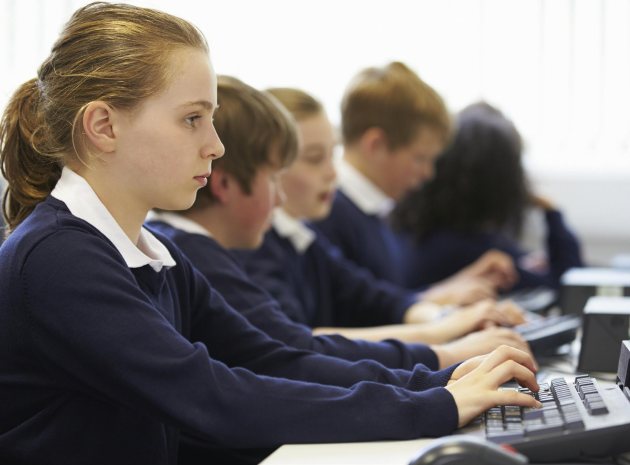A survey by Development Autism Research Technology (DART) shows that children with autism spend on average three hours a day using technology at home and 43% use technology for more than four hours a day. Parents and commentators have expressed conc prevent a child from interacting with others but after talking to education professionals who deal with young people with autism in mainstream schools it seems that this is a simplistic view.
Jo Young is a Lead Learning Support Assistant in the ASD Pod at George Spencer Academy in Nottingham. Every Learning Support Assistant within the Inclusion centre has an iPad and they find these invaluable in creating timely interventions.
Children with autism respond well to visual content, partly because it does not involve a lot of reading or trying to tune into complex spoken instructions. The Widgit program Communication in Print lets staff provide simple effective routines for children and young people to follow in practical classes such as cookery or design and technology where sequences are important. “We have also found this program particularly useful for making prompt flashcards for test situations so that the student does not have to rely on a verbal prompt but can remain with the other students with the flash cards on his desk,” says Jo, who also uses it to create visual guides for students who need help to organise their school bag or understand their personal hygiene routine at home.
The school uses Moodle and Google Drive across the school so homework and learning is presented in a consistent way and is accessible at home and school. “This is extremely beneficial for students with autism who struggle with organisation and prefer to use technology,” explains Jo.
Write on
Jules Daulby is an advisory teacher for SENSS (SEN Specialist Service) in Dorset. She often recommends technology to support reading and writing because even if children have good literacy skills they can get overloaded very easily so anything which lets them get text on the page easily and quickly is beneficial. They use word processing apps and Clicker WriteOnline, which lets them click and enter whole words or phrases into text. This is especially useful for specialist or unusual vocabulary and means they do not lose the flow while hunting for a word. Similarly Dragon Naturally Speaking and Read and Write Gold are useful tools as children can just sit back and talk to get a first draft down.
Bitterne Park School in Southampton has a small group of young people with autism who cannot cope with mainstream but whose needs would not be met in a special school The Additional Resource Base ARB aims for a ‘calm, consistent and structured manner within clearly understood expectations and routines’ and computers are a big part of this.
The ARB delivers much of the curriculum via computer using sites such as Bite Size and TES resources. They find that the students can produce good work on the computer but the standard of composition drops if they are required to hand write as some find that the load is just a little too great. Some like to bring their own devices as they appreciate seeing the same interface each time. While some children find it tiring to carry round a device all day many young people with autism seem to like the weight of technology. Staff in Bitterne Park ARB report that their children like to carry a rucksack, laptop bag and this fits with the need many of them have for heavy duvets or lots of blankets at night to make them feel comfortable.
Far from cutting children off and turning them into silent computer geeks, technology is helping to improve social communication. They often use the interactive whiteboards to play games which the whole group will join in with; perhaps it is something about not being required to engage in face to face contact which takes the pressure off. The Big Lottery funded the ARB’s multisensory room, which was originally a place for calming down when children were stressed and losing control. Now it is becoming a place for quiet reading and even a social space where a couple of students will sit and chat. The comments from these professionals chime with the DART report: ‘Studies show that children with autism can learn skills from technology. During computer-based lessons or technology interactions, autistic children regularly show better concentration and initiate more contact with those around them – for example showing teachers and parents what they have done or talking to their peers.
Information from the national autistic soc: http://www.autism.org.uk/technology
Getting the most out of technology: advice from, and for, parents, DART: www.dart.ed.ac.uk/
ABOUT THE AUTHOR
Sal McKeown is a freelance special needs journalist and author of Brilliant Ideas for Using ICT in the Inclusive Classroom (Routledge) and a book for parents, How to help your Dyslexic and Dyspraxic Child (Crimson Publishing).










